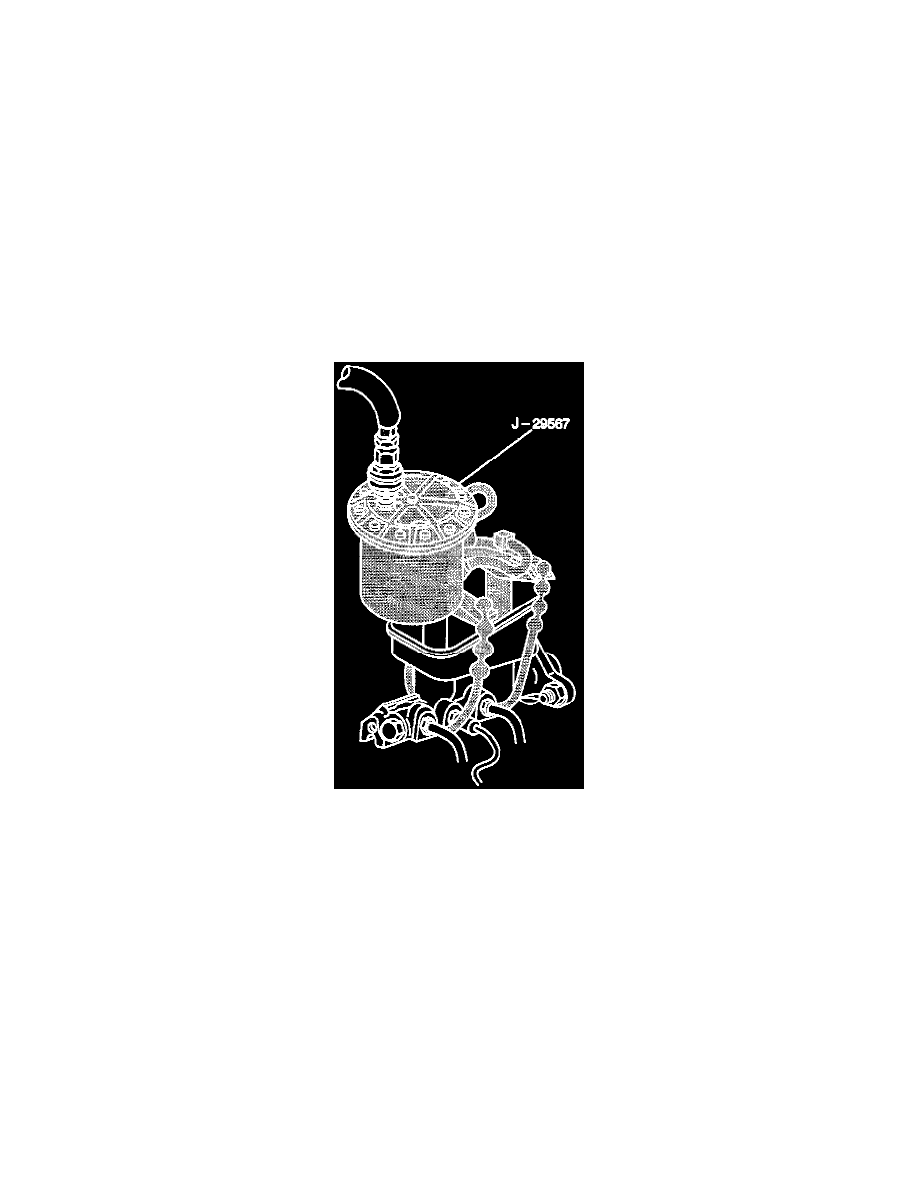C 2500 Truck 2WD V8-5.7L VIN R (1997)

10. Repeat this sequence, including the 15 second wait, until all air is purged from the wheel cylinder/caliper.
11. Repeat Steps 5 through 10 at each wheel until the system is bled.
12. Check the brake pedal for "sponginess" and the brake warning lamp for an indication of unbalanced pressure. Repeat the bleeding procedure to
correct either of these conditions.
Pressure Bleeding
Tools Required:
^
J29567 Brake Bleeder Adapter
^
J28434 Wheel Cylinder Bleeder Wrench
A diaphragm type pressure bleeder must be used. It must have a rubber diaphragm between the air supply and brake fluid to prevent air, moisture, oil,
and other contaminants from entering the hydraulic system.
CAUTION: Brake fluid can damage electrical connections and painted surfaces. Use shop cloths, suitable containers, and fender covers to prevent
brake fluid from contacting these areas. Always reseal and wipe off brake fluid containers to prevent spills.
1.
Fill the pressure tank at least 2/3 full of brake fluid.
^
The bleeder must be bled each time fluid is added.
Reservoir Bleeder Adapter
2. Charge the bleeder to 140-170 kPa (20-25 psi).
3. Install the bleeder adapter.
4. If the Brake Pressure Modulator Valve (BPMV) of the Four Wheel Antilock (4WAL) system is replaced or suspected to have air trapped inside, it
must be bled next. Refer to Antilock Brake System.
5. Bleed each wheel in the following sequence:
a. Right rear.
b. Left rear.
c. Right front.
d. Left front.
6. Connect the hose from the bleeder to the adapter at the master cylinder.
7. Open the tank valve.
8. Attach a hose to the bleeder valve.
^
Immerse the opposite end of the hose into a container partially filled with clean brake fluid.
9. Open the bleeder valve at least 3/4 of a turn and allow the fluid to flow until no air is seen in the fluid.
10. Tighten the bleeder valve to 13 Nm (110 inch lbs.).
11. Repeat bleed steps at all wheels.
12. Check the brake pedal for "sponginess."
^
Repeat the entire bleeding procedure if this condition is found.
